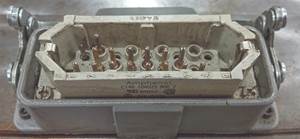Hiding Weld Marks In Diamond Polished Surfaces
Polishing pointers
When I was a child, "Felix the Cat" was a very popular cartoon character and whenever Felix got into trouble he would reach inside his bag of tricks and pull out something that would always solve the problem. Here is a trick that I pulled out of my bag and it works very well - even on optically polished headlights. It's the secret to making weld marks invisible.
Ever since I started polishing 31 years ago people have always asked me to hide the weld, so I tried lapping with steel, with brass and with wood. I even tried buffing with all types of felt - sometimes it worked, sometimes it didn't. The problem was always the same - the obvious ring around the weld. The steel outside and inside of the ring is fine, but the ring itself is harder than the rest of the steel and sometimes no matter how much you lap it, it remains obvious. That ring is where the electricity first starts to arc to the host metal. It has to do all of the heating and melting of the host metal, which is where the intense heat simply ends up hardening the steel more than the rest. Once the melting begins, the rest of the weld is not so bad. However, it's the initial melting of the host that creates the ring.
The answer is to simply reduce the temperature differences when welding. There are three things you should do to get a perfectly invisible weld:
- The block needs to be pre-heated - about 600xF works well;
- Micro welding - a tiny rod used under low amperage leaving small beads of weld - is used instead of any other welding method; and,
- Post-heat so the block cools as one piece. By preheating the block to 600xF and using low amperage micro welding, the hard rings are simply never formed in the first place - that's the whole secret. If high heat welding is forming rings, don't high heat weld!
Toolmakers should be aware that hiding weld marks on H-13 steel will still require additional work - lapping the welded areas with wood and diamond. Using the low-heat method is only the first step when working with H-13 steel. Results are best when using wood laps in a triangle shape and lapping with the flat bottom of the triangle.
Natural diamond of the highest grade will provide the greatest amount of final invisibility. It is important that the polisher use the technique of "lightening up" on his/her downward pressure as the weld mark begins to disappear. The polisher also should be lubricating the lapped area with denatured alcohol. In some cases a final step of soft buffing may be used, but buffing should be immediately abandoned if the weld mark begins to reappear - as is sometimes the case with particularly stubborn batches of steel or poor weld techniques.
Die cast shops also should try this low-heat method. There are die cast job cases of blocks welded this way four or more years ago and they are still running without failure. The secret is to stress relieve the blocks thoroughly after the low stress welding operation. If you don't create stress in the welding process and stress relieve all of the blocks afterward, die cast weld failures will drop off dramatically.
Micro-welding without the pre- and post-heating will still form rings in the diamond surface. Lapping will improve the invisibility end result by 20 percent at best, so it's up to the welder to do 80 percent of the work. This method of minimizing the differences in temperatures between the block and the welding tip has proven to yield invisible welds. Give it a try!
Related Content
How to Maintain Heaters, Thermocouples, Valve Gates and Controls
An examination of real-world problems and solutions involving hot runner system maintenance.
Read MorePrecision Welding Services Offer Rapid Turnaround Mold Repair and Reduced Molder Downtime
X-Cell Tool & Mold relies on outsourced, high-quality welding repairs from Lewis-Bawol Welding to ensure its customers' molds are back in production quickly and affordably.
Read More5 Hot Runner Tips for Moldmakers and Molders
Best practices for initial hot runner tryouts and effective preventive maintenance.
Read MoreLaser Welding Versus Micro Welding
The latest battle in finely detailed restoration/repair of mold materials.
Read MoreRead Next
How to Use Continuing Education to Remain Competitive in Moldmaking
Continued training helps moldmakers make tooling decisions and properly use the latest cutting tool to efficiently machine high-quality molds.
Read MoreHow to Use Strategic Planning Tools, Data to Manage the Human Side of Business
Q&A with Marion Wells, MMT EAB member and founder of Human Asset Management.
Read MoreAre You a Moldmaker Considering 3D Printing? Consider the 3D Printing Workshop at NPE2024
Presentations will cover 3D printing for mold tooling, material innovation, product development, bridge production and full-scale, high-volume additive manufacturing.
Read More





.jpg;maxWidth=300;quality=90)




_300x250 3.png;maxWidth=300;quality=90)











_970x250 1.png;maxWidth=970;quality=90)